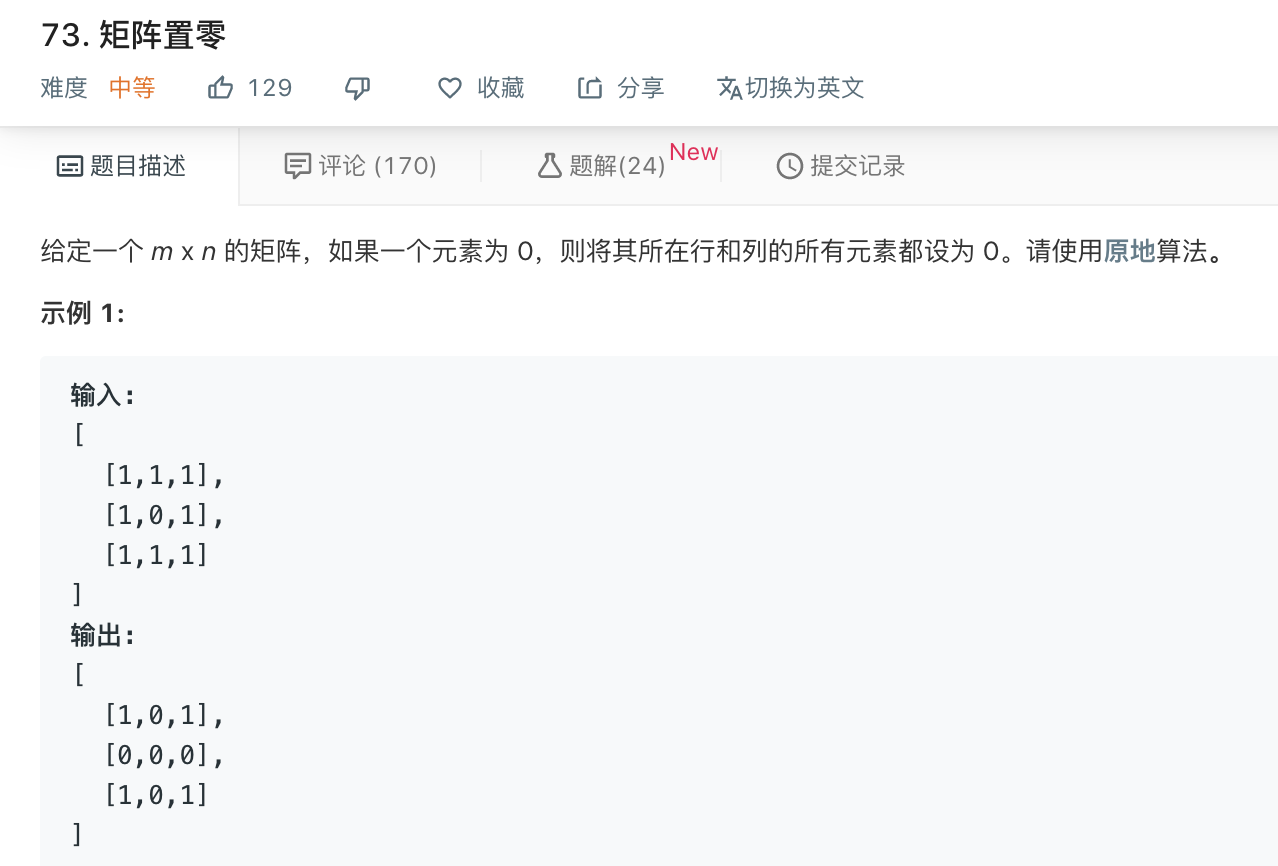
思路
方法 1:额外存储空间方法

code
public void setZeroes(int[][] matrix) { Set<Integer> rowSet = new HashSet<>(); Set<Integer> columnSet = new HashSet<>(); int rows = matrix.length; int columns = matrix[0].length; for(int i=0;i<rows;i++) for(int j=0;j<columns;j++){ if(matrix[i][j]==0){ rowSet.add(i); //加到集合中去 columnSet.add(j); } } for(int i=0;i<rows;i++){ for(int j=0;j<columns;j++){ if(rowSet.contains(i)||columnSet.contains(j)){ matrix[i][j]=0; //进行更新 } } } }
方法2 不使用额外空间的解法

class Solution { public void setZeroes(int[][] matrix) { Boolean isCol = false; int R = matrix.length; int C = matrix[0].length; for (int i = 0; i < R; i++) { // Since first cell for both first row and first column is the same i.e. matrix[0][0] // We can use an additional variable for either the first row/column. // For this solution we are using an additional variable for the first column // and using matrix[0][0] for the first row. if (matrix[i][0] == 0) { isCol = true; } for (int j = 1; j < C; j++) { // If an element is zero, we set the first element of the corresponding row and column to 0 if (matrix[i][j] == 0) { matrix[0][j] = 0; matrix[i][0] = 0; } } } for (int i = 1; i < R; i++) { for (int j = 1; j < C; j++) { if (matrix[i][0] == 0 || matrix[0][j] == 0) { matrix[i][j] = 0; } } } // See if the first row needs to be set to zero as well if (matrix[0][0] == 0) { for (int j = 0; j < C; j++) { matrix[0][j] = 0; } } if (isCol) { for (int i = 0; i < R; i++) { matrix[i][0] = 0; } } } }




